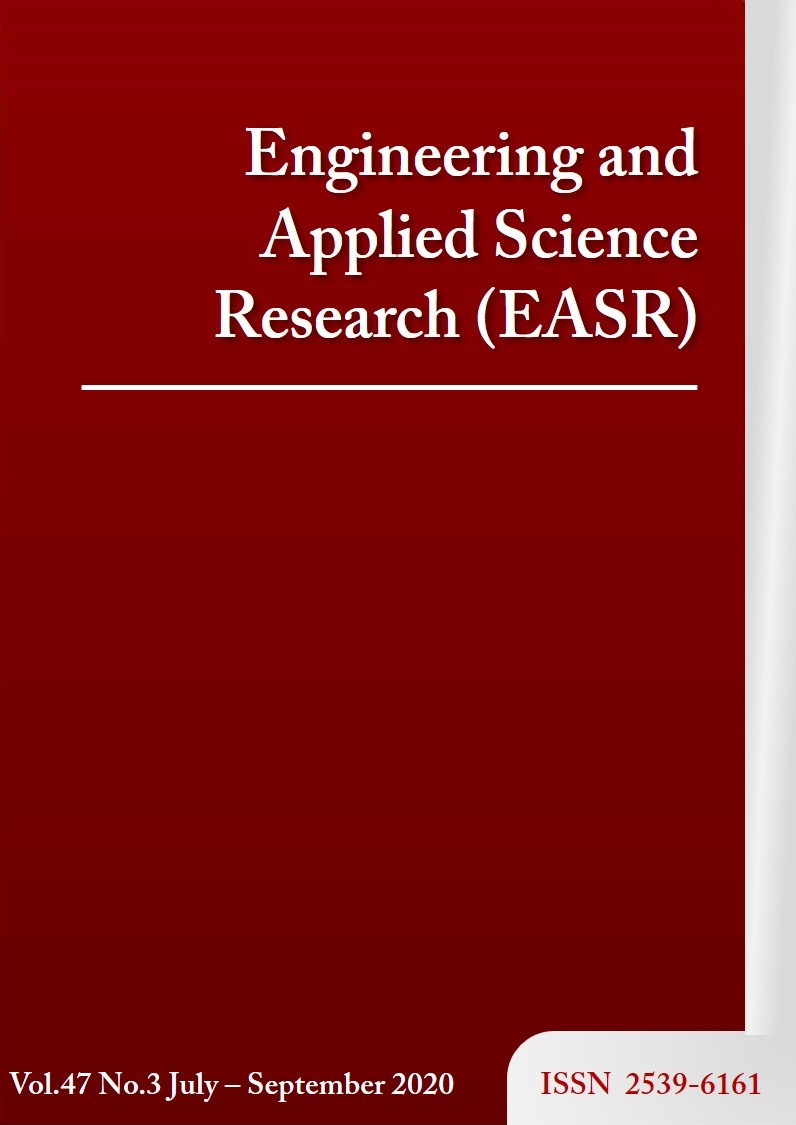Development of time series models for various pollutants in Bangalore city using the Akaike information criterion
Main Article Content
Abstract
Pollution levels in developing countries, such as India, have become a major source of health problems. They need to be monitored and controlled. Bangalore, one of the major cities in India, faces a huge amount of pollution. Due to the dire need to control these pollutants, a sound mathematical modeling approach needs to be created for forecasting, controlling and monitoring. One such approach is time series modeling. The current work addresses a time series model that has been developed for the major pollutants in Bangalore city. These pollutants include PM10, PM2.5, NOx and SO2. The models used vary from AR (autoregressive), ARMA (autoregressive moving average) and ARIMA (autoregressive integrated moving average) for modeling air pollution in Bangalore city. Additionally, the selection of the best models was based on the Akaike Information Criterion, p-value and Box‑Pierce test. Various steps were followed to build the model, which included identification of missing and extreme values followed by creating an appropriate imputing method and then identification of time series models using autocorrelation and partial autocorrelation plots to obtain various time series models. The best time series models were chosen based on the Akaike Information criterion (AIC) and various other statistical tests.
Article Details
This work is licensed under a Creative Commons Attribution-NonCommercial-NoDerivatives 4.0 International License.
References
Beveridge WH. Weather and harvest cycles. Econ J. 1921;31:429-52.
Beveridge WH. Wheat prices and rainfall in western Europe. J Roy Stat Soc.1922;85:412-59.
Yule GU. On the time-correlation problem, with special reference to the variate-difference correlation method. J Roy Stat Soc. 1921;84:497-526.
Slutsky E. The summation of random causes as the source of cyclic processes. Econometrica. 1927;5:105-46.
Wold HO. A study in the analysis of stationary time series. Stockholm: Almqvist and Wiksell; 1938.
Box GEP, Jenkins GM., Bacon DW. Models for forecasting seasonal and nonseasonal time series. In Wiley HB, editor. Advanced seminar on spectral analysis of time series. New York: Wiley; 1967. p. 271-311.
Box GEP, Jenkins GM, Reinsel G. Time series analysis, forecasting and control. 4th ed. Englewood Cliffs: Prentice-Hall; 2008.
Diebold FX, Kilian L, Nerlove M. Time series analysis. In: Durlauf SN, Blume LE, editors. Macro econometrics and time series analysis. London: Palgrave Macmillan; 2010. p. 317-42.
Merz PH, Painter LJ, Ryason PR. Aerometric data analysis time series analysis and forecast and atmospheric smog diagram. Atmos Environ. 1972;6: 319-42.
Tiao GC, Box GEP, Hamming WJ. Analysis of Los Angeles photochemical smog data: a statistical overview. J Air Pollut Contr Assoc. 1975;25(3):260-8.
Chock PD, Terrell TR, Levitt SB. Time series analysis of riverside, California air quality data. Atmos Environ. 1975;9(11):978-89.
Schwartz J, Marcus A. Mortality and air pollution in London: a time series analysis. Am J Epidem. 1990;131:85-194.
Liu PWG, Johnson R. Forecasting Peak daily ozone levels—I. a regression with time series errors model having a principal component trigger to fit 1991 ozone levels. J Air Waste Manag Assoc. 2002;52(9):1064-74.
Liu PWG, Johnson R. Forecasting peak daily ozone levels: part 2—a regression with time series errors model having a principal component trigger to forecast 1999 and 2002 ozone levels. J Air Waste Manag Assoc. 2003;53(12):1472-89.
Liu PWG. Establishment of a Box-Jenkins multivariate time series model to simulate ground-level peak daily one-hour ozone concentrations at Ta-Liao in Taiwan. J Air Waste Manag Assoc. 2007;57:1078-90.
Liu PWG. Simulation of the daily average PM10 concentrations at Ta-Liao with Box-Jenkins time series models and multivariate analysis. Atmos Environ. 2009;43:2104-13.
Liu PWG, Tsai JH, Lai HC, Tsai DM, Li LW. Establishing multiple regression models for ozone sensitivity analysis to temperature variation in Taiwan. Atmos Environ. 2013;79:225-35.
Gocheva-Ilieva SG, Ivanov AV, Voynikova DS, Boyadzhiev DT. Time series analysis and forecasting for air pollution in small urban area: an SARIMA and factor analysis approach. Stoch Environ Res Risk Assess. 2014;28:1045-60.
Dhurafi NAA, Masseran N, Zamzuri ZH. Compositional time series analysis for air pollution index data. Stoch Environ Res Risk Assess. 2018;32:2903-11.
Sharma P, Chandra A, Kaushik SC. Forecasts using Box Jenkins models for the ambient air quality data of Delhi City. Environ Monit Assess. 2009;157(1-4):105-12.
Modarres R, Dehkordi AK. Daily air pollution time series analysis of Isfahan City. Int J Environ Sci Tech. 2005;2(3):259-67.
Farah W, Nakhle MM, Abboud M, Maesano IA, Zaarour R, Saliba N, et al. Time series analysis of air pollutants in Beirut, Lebanon. Environ Monit Assess. 2014;186:8203-13.
Abulude FO, Fagbayide SD, Akinnusotu A, Elisha JJ, Makinde OE. Particulate matter and source identification: a case study of Nigeria. Eng Appl Sci Res. 2019;46(2):151-69.
Montgomery DC, Jenning CL, Kulahci M. Introduction to time series analysis and forecasting. 2nd ed. New York: John Wiley & Sons; 2015.
CPCB. Central Pollution Control Board, Bangalore [Internet]. India: Ministry of Environment, Forest and Climate Change; 2017 [cited 2017 Mar 7]. Available from: http://cpcb.nic.in/
Hair JFJr, Black WC, Babin BJ, Anderson RE. Multivariate data analysis. 7th ed. Noida: Pearson Education; 2013.
Roberts EM. Review of statistics extreme values with applications to air quality data part I: review. J Air Pollut Contr Assoc. 1979;29(6):632-7.
Roberts EM. Review of statistics of extreme values with applications to air quality data – part II: applications. J Air Pollut Contr Assoc. 1979;29(7):733-40.
Achcar JA, Fernández Bremauntz AA, Rodrigues ER, Tzintzun G. Estimating the number of ozone peaks in Mexico City using a non-homogeneous Poisson model. Environmetrics. 2008;19(5):469-85.
Kolarik WJ. Creating quality: process design for results. New York: Mcgraw Hill; 1999.
Walker G. On periodicity in series of related terms. Proc Roy Soc A. 1931;131:518-32.
Akaike H. A new look at the statistical model identification. IEEE Trans Autom Control. 1974;19:716-23.
Raymond MR, Roberts DM. A comparison of methods for treating incomplete data in selection research. Educ Psychol Meas. 1987;47(1):13-26.
Yozgatligil C, Aslan S, Iyigun C, Batmaz I. Comparison of missing value imputation methods in time series: the case of Turkish meteorological data. Theor Appl Climatol. 2013;112:143-67.
Willmott CJ, Ackleson SG, Davis RE, Feddema JJ, Klink KM, Legates DR, et al. Statistics for the evaluation and comparison of models. J Geophys Res. 1985;90:8995-9005.



